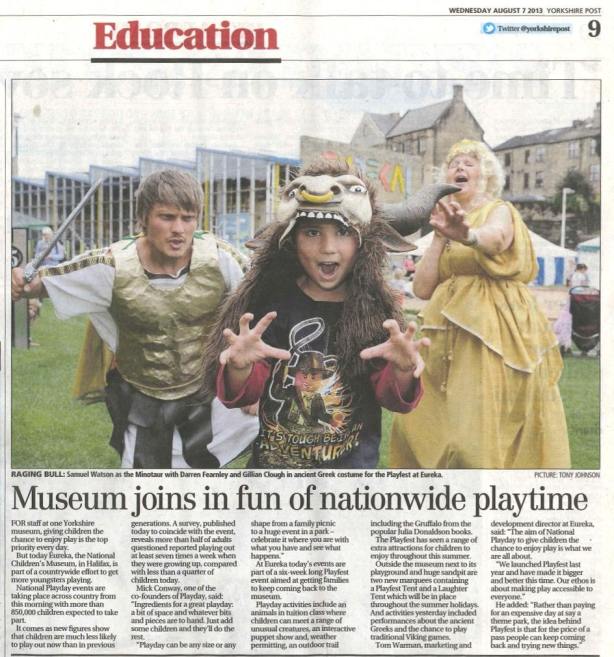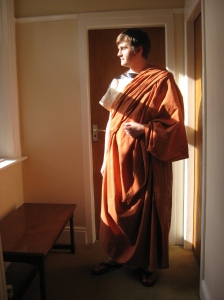Good news guys! I recently got the opportunity to design and make the costumes for Eureka!’s latest school workshop, The Ancient Greeks. Woohoo!
In the past Eureka! has sourced all of its costumes for special events and workshops from a fancy dress company called Smiffys, so I was chuffed to be asked to take on the project.
I found this handy website, essentially a manual on ancient Greek costume construction and draping. It all looked so simple, and I thought it’d be a breeze. That is, until I realized just exactly how much fabric you need to make a 2m x4m rectangle for an Ionic peplos (or Hellenic chiton, as I prefer to call it).
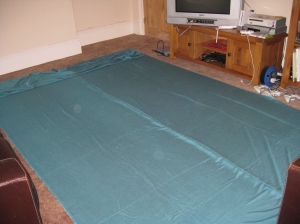
Yes, that is the single piece used for one Hellenic chiton, taking up the entire living room floor. Or rather, two pieces sewn together to make correct-sized rectangle, as fabric these days just isn’t woven to be 2m wide (back in the day Greek ladies did all their own weaving, and could make fabric just the right size for their draping needs). To get the right size, I bought 8 metres of fabric, cut it into two 4 metre pieces, and sewed it back together. Possibly some of the most shocking straight stitching I’ve ever done in my life, but meh, who’s looking that closely?
A note on the fabric: it’s imitation silk polyester, so it was cheap (£3.50/m) and had the exact draping quality I was after (thank you, Bombay Stores!). I wanted something colourful to help dispel this myth about the ancient Greeks wearing pure white garments, which is what people believe because of the faded marble statues. Greek fashion and sculpture were in fact very colourful – you can read about it here if you don’t believe me. So, I was after colours that were bright but that didn’t look artificial, and this teal matched pretty nicely with my Minoan colour reference image.
Once I had fabric the right size and shape, Ben (my ever faithful model/assistant/lifesaver) helped me drape it properly. This was no mean feat – we spent about two hours experimenting with it, and at one stage it looked so bad that I wondered why I even bothered in the first place, but eventually we got it to something that looked more or less right.
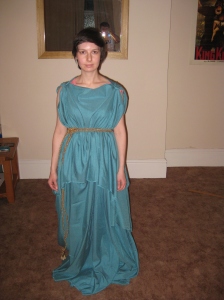
As you can see, at this stage it was way too long and also looking a bit Statue of Liberty-esque. Next came the time-consuming task of finishing the raw edges and trimming the edge of the fold and the hem. Again, it sounds simple enough, but it gets a lot more difficult when you actually sit down to sew on 8 metres of trim. But I slogged through, and after a few late nights and some minor backache, we (I have to say we, because Ben really was instrumental in this) had our finished product:
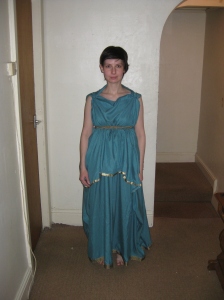
And then I made another one! The second chiton is made in the same fabric, just a different colour. Here are two fabulous members of the Eureka! workshop team, Gillian and Tasha, modelling before the first workshop last week:

Next up: Going Greek Part 2: Tunics and Himations. Stay tuned!
